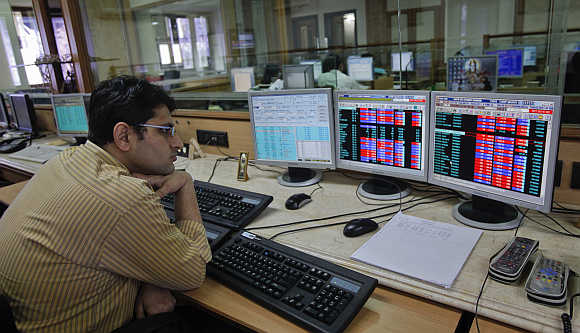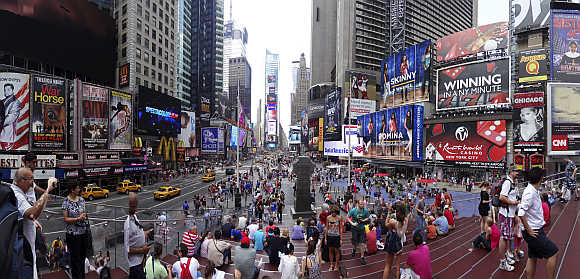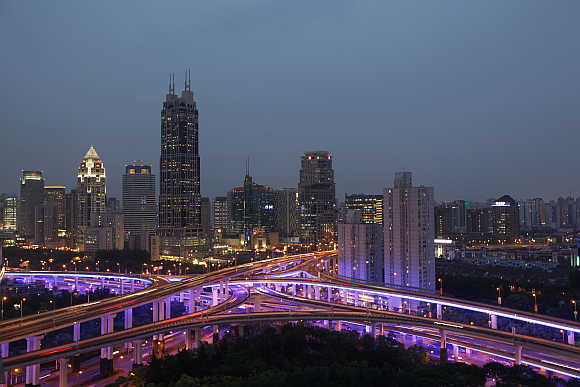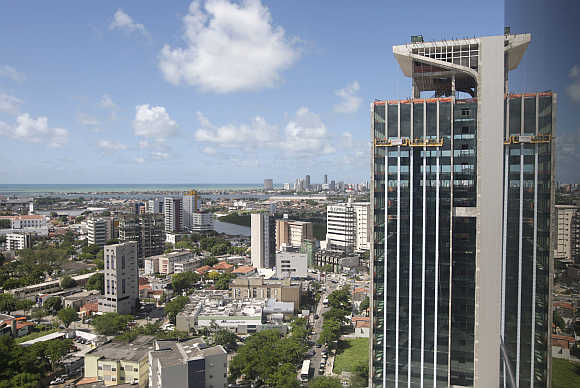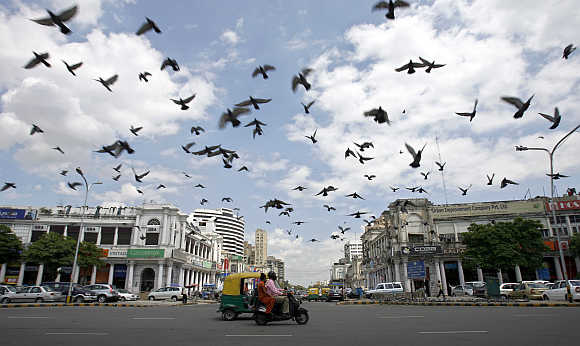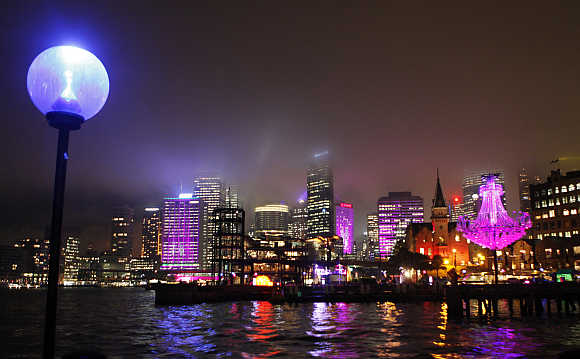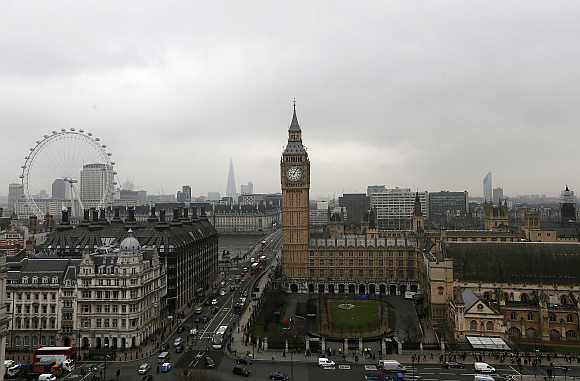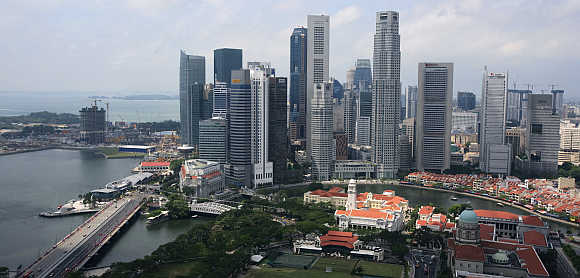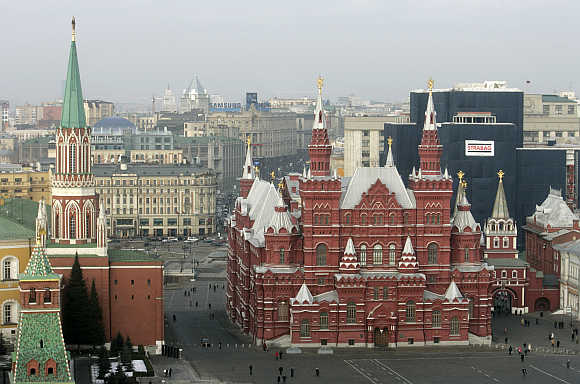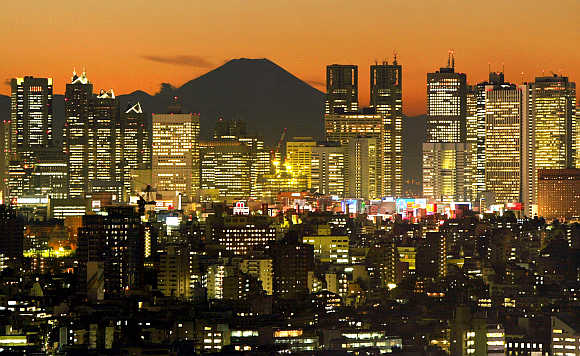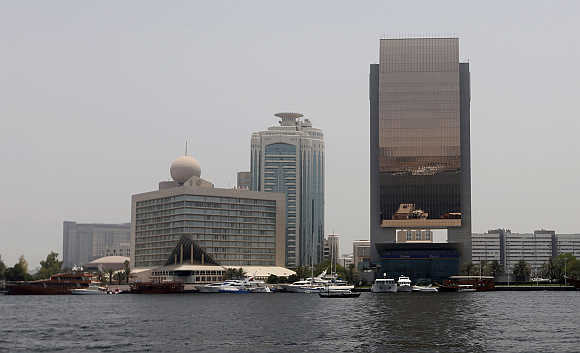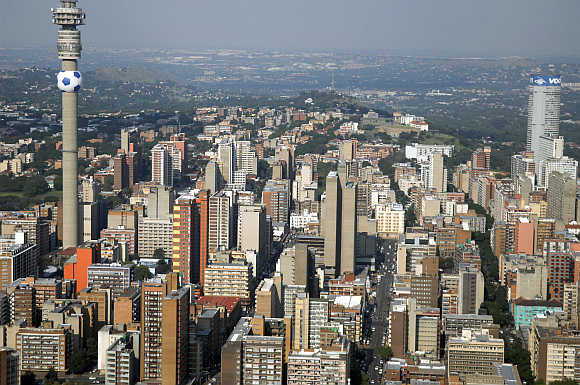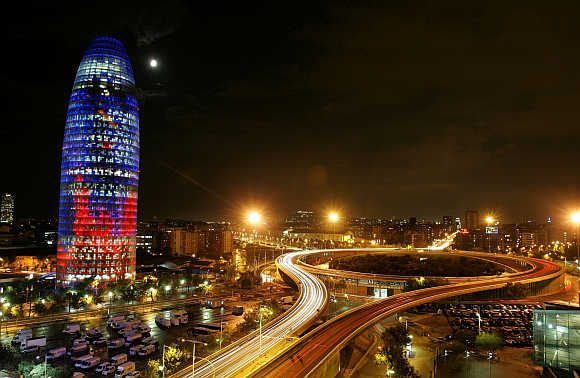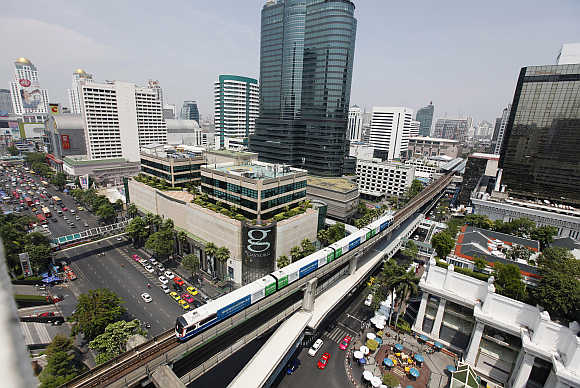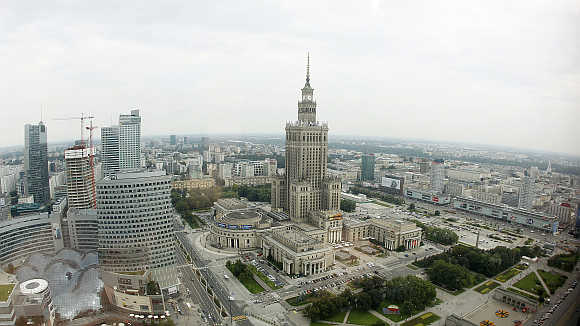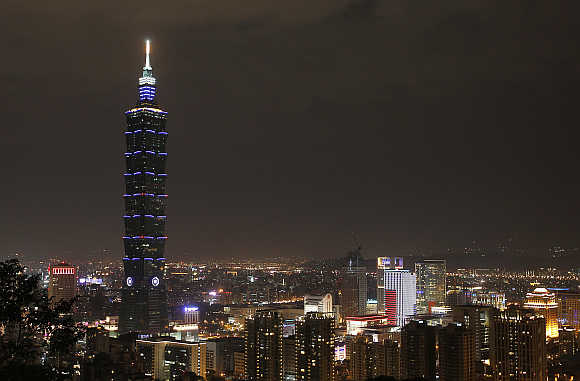 | « Back to article | Print this article |
India slips, US at top spot on FDI confidence index
After a 12-year hiatus, the United States reclaimed first place among top executives in a survey on foreign direct investment sentiment, displacing China as it makes progress toward sustainable and steady economic growth, according to Reuters.
The United States jumped from fourth place in 2012, according to the 2013 Foreign Direct Investment Confidence Index, a survey of more than 300 executives from 28 countries by global consulting firm AT Kearney, it says.
Let's take a look at 20 countries rated best by the Index.
Source: AT Kearney
Click NEXT to read more...
India slips, US at top spot on FDI confidence index
The United States
Rank in FDI Confidence Index (2013): 1
Rank in FDI Confidence Index (2012): 4
The United States takes the top spot in the FDI Confidence Index for the first time since 2001. An increasingly competitive workforce and improving cost factors are benefiting businesses in the United States. Inflows remain below their 2008 peak, but rose 15 per cent in 2011 to $226.9 billion.
Click NEXT to read more...
India slips, US at top spot on FDI confidence index
China
Rank in FDI Confidence Index (2013): 2
Rank in FDI Confidence Index (2012): 1
China drops out of the top spot for the first time since 2001. Its long reign at the top and continued strength reflect its economic growth success story and its attractiveness as an investment destination. China attracted a record $211.5 billion in FDI inflows in 2011, up 12 per cent from 2010 and just $15 billion less than the United States.
Click NEXT to read more...
India slips, US at top spot on FDI confidence index
Brazil
Rank in FDI Confidence Index (2013): 3
Rank in FDI Confidence Index (2012): 3
Brazil retains third place in the Index, as investors are drawn to the country's enticing demographics and rising incomes. FDI in 2011 hit a record $66.7 billion, up 37 per cent from 2010.
Click NEXT to read more...
India slips, US at top spot on FDI confidence index
Canada
Rank in FDI Confidence Index (2013): 4
Rank in FDI Confidence Index (2012): 20
Canada jumps 16 spots to take fourth in the Index. It is the only G-7 country to recoup all of its output and employment losses since the recession. It had FDI of $40.9 billion in 2011, a sharp increase from 2010's $23.4 billion.
Click NEXT to read more...
India slips, US at top spot on FDI confidence index
India
Rank in FDI Confidence Index (2013): 5
Rank in FDI Confidence Index (2012): 2
India has made a decade of rapid economic gains and still has a large, young, and fast-growing population. In 2011, the country saw 31 per cent FDI growth to $31.6 billion, with investors still seeing enormous potential.
Click NEXT to read more...
India slips, US at top spot on FDI confidence index
Australia
Rank in FDI Confidence Index (2013): 6
Rank in FDI Confidence Index (2012): 6
Australia remains in sixth place in the Index as continued resource development drives economic growth. Mineral fuels and gold have drawn particular interest from foreign investors.
Click NEXT to read more...
India slips, US at top spot on FDI confidence index
Germany
Rank in FDI Confidence Index (2013): 7
Rank in FDI Confidence Index (2012): 5
Germany drops two spots to seventh, but a strong rebound from the initial economic crisis and a role as Europe's largest international and industrial economy keep it at the forefront of investors' minds.
China is now the largest single investor in Germany in terms of number of projects after acquisitions of small- and medium-sized companies - including the private, niche industrial manufacturers that form the backbone of Germany's export-driven economy.
Click NEXT to read more...
India slips, US at top spot on FDI confidence index
The United Kingdom
Rank in FDI Confidence Index (2013): 8
Rank in FDI Confidence Index (2012): 8
The United Kingdom holds steady at eighth in the Index. It is an increasingly popular target for cash-rich investors seeking stability and resilience in the developed world. It is also still drawing buyers from developed markets.
Click NEXT to read more...
India slips, US at top spot on FDI confidence index
Mexico
Rank in FDI Confidence Index (2013): 9
Rank in FDI Confidence Index (2012): Not rated
Mexico returns to the 2013 rankings after dropping out in 2012. The government is considering raising foreign ownership limits in energy, transport, and communications to help make the economy more dynamic and competitive as it recovers from the recession. US demand, which drives 80 per cent of exports, is crucial for recovery as well.
Click NEXT to read more...
India slips, US at top spot on FDI confidence index
Singapore
Rank in FDI Confidence Index (2013): 10
Rank in FDI Confidence Index (2012): 7
Singapore drops three spots in the Index despite an FDI increase in 2011 as investors sought entry into Southeast Asia. The EU and Singapore are set to complete a free-trade agreement that could further increase FDI from Europe, already the country's largest investment source.
Click NEXT to read more...
India slips, US at top spot on FDI confidence index
Russia
Rank in FDI Confidence Index (2013): 11
Rank in FDI Confidence Index (2012): 10
Russia moves up one position as it seeks economic diversification and modernization. The country completed accession to the World Trade Organization in 2012, bringing increased access to export markets and investors and lower tariffs.
Click NEXT to read more...
India slips, US at top spot on FDI confidence index
France
Rank in FDI Confidence Index (2013): 12
Rank in FDI Confidence Index (2012): 17
France rose five places to 12th, defying sceptics that cite its soaring deficit and stalling growth. FDI rose 34 per cent in 2011 to $40.9 billion. The country has excellent infrastructure, a relatively favourable demographic outlook, and the most business-friendly R&D tax treatment in the world, according to the OECD.
Click NEXT to read more...
India slips, US at top spot on FDI confidence index
Japan
Rank in FDI Confidence Index (2013): 13
Rank in FDI Confidence Index (2012): 21
Japan moves up eight places to its highest ranking since 2004. FDI in the manufacturing sector remains strong. While regional neighbours challenge Japan as a production location, logistics hub, and regional headquarters location, foreign investors remain attracted to the country's R&D competencies, manufacturing technologies, and brands.
Click NEXT to read more...
India slips, US at top spot on FDI confidence index
The United Arab Emirates
Rank in FDI Confidence Index (2013): 14
Rank in FDI Confidence Index (2012): 15
The United Arab Emirates rise one spot to 14th in the Index. Its well-developed infrastructure, strategic location, and tax-free base offer investors easy access to fast-growing African and Middle Eastern markets. A long-anticipated law allowing foreigners to own more than 49 per cent of businesses in certain sectors is awaiting cabinet approval.
Click NEXT to read more...
India slips, US at top spot on FDI confidence index
South Africa
Rank in FDI Confidence Index (2013): 15
Rank in FDI Confidence Index (2012): 11
South Africa drops four places to 15th this year. The country remains a major player in tapping Africa's resources. The government also lifted restrictions on hydraulic fracturing in September 2012, opening up access to the world's fifth largest shale gas reserves.
Click NEXT to read more...
India slips, US at top spot on FDI confidence index
Spain
Rank in FDI Confidence Index (2013): 16
Rank in FDI Confidence Index (2012): 24
Spain rises eight spots as contrarian investors are snapping up distressed businesses at low prices. Spain was the fourth most popular European destination by number of projects in 2011. The country's strengths in renewable energy and infrastructure, access to Latin America, and productive yet low-cost workforce are drawing foreign investors despite the economic woes.
Click NEXT to read more...
India slips, US at top spot on FDI confidence index
Thailand
Rank in FDI Confidence Index (2013): 17
Rank in FDI Confidence Index (2012): 16
Thailand drops only one spot, despite political turmoil and the worst floods in five decades. A rebound may be on the way, with flood-hit manufacturers restoring plants and the government planning spending on infrastructure and flood defences.
Click NEXT to read more...
India slips, US at top spot on FDI confidence index
Switzerland
Rank in FDI Confidence Index (2013): 18
Rank in FDI Confidence Index (2012): 22
Switzerland moves up four spots and remains an attractive base for many businesses because of liberal trade and investment policies and a competitive tax regime.
Click NEXT to read more...
India slips, US at top spot on FDI confidence index
Poland
Rank in FDI Confidence Index (2013): 19
Rank in FDI Confidence Index (2012): 23
Poland rises four spots to 19th. It saw a 70 per cent increase in FDI inflows in 2011 to $15.1 billion and continues to attract industrial investors hunting for cost savings.
Click NEXT to read more...
India slips, US at top spot on FDI confidence index
Taiwan
Rank in FDI Confidence Index (2013): 20
Rank in FDI Confidence Index (2012): 18
Taiwan drops two places to 20th. In November 2012 it launched a two-year drive to lower FDI barriers in response to plateauing investment and diminishing land and labour cost advantages in mainland China. The goal is to lure back local companies that moved production over the last two decades.
